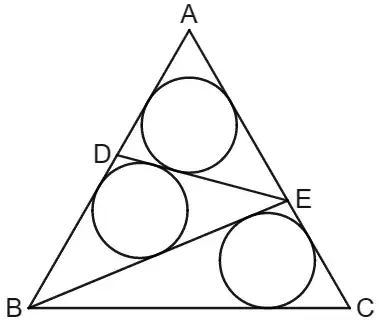Here is a diagram from a question that I asked recently.
In equilateral $\triangle ABC$, $D$ is on $AB$, and $E$ is on $AC$. In the three regions thus formed, circles of equal radii are inscribed.
Can this diagram be constructed with straightedge and compass?
If we construct the chords, then the circles are easy to draw.
Assuming that $AB=1$, the closed form expressions of the lengths and angles are not simple, so I wouldn't be surprised if the diagram cannot be constructed with straightedge and compass.
radius of circles $=r=\frac{\sqrt{3}}{30}\left(7-\sqrt[3]{2}-2\sqrt[3]{4}\right)=0.148\ldots$
$BD=DE=\sqrt{\dfrac{3 (651+392\sqrt[3]{2}-436\sqrt[3]{4})}{50(-94-23\sqrt[3]{2}+134\sqrt[3]{4})}}=0.550\ldots$
$EC=\dfrac{1}{1+2^{2/3}}=0.386\ldots$
$\angle{DBE}=\arccos{(2^{-1/3})}=37.467\ldots^{\text{o}}$
On the other hand, the essence of the diagram is very simple (the diagram can be precisely described in just a few words, as I did at the beginning of my question). And, earlier I asked about another construction involving four circles and two chords, and the answer turned out to be much simpler than I expected (although still quite clever). So I still have a sliver of hope that my diagram here can be constructed somehow.
